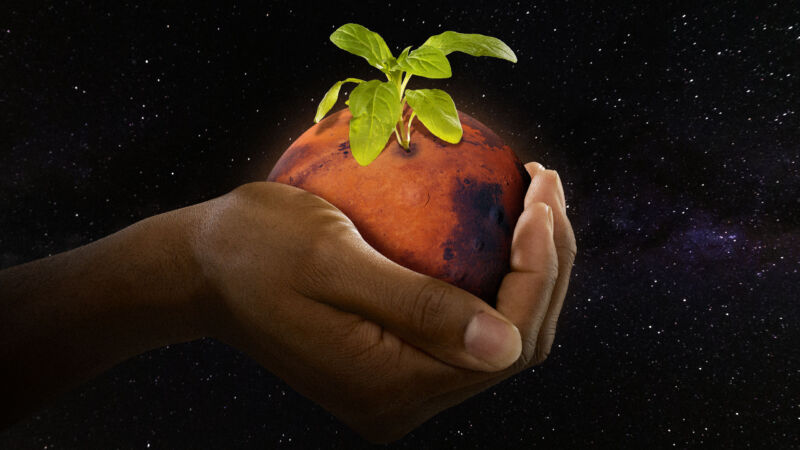What would it take to build a self-sustaining astronaut ecosystem on Mars?

Enlarge (credit: Aurich Lawson | Getty Images)
In 1829, Nathaniel Bagshaw Ward, a doctor living near Wellclose Square in London, dropped a few seeds of fern and grass into a bottle partially filled with soil. Soon, he witnessed tiny blades of grass and one little fern sprouting from the soil, despite the bottle having been sealed. It turned out that plants, cycling through whatever water, minerals, nutrients, and atmosphere they had in their bottle, could live and grow almost completely isolated from the outside world, using sunlight as their only energy source.
Today, after over six decades of researching bioregenerative life support systems, we're edging closer to pulling the same trick off in habitats designed to support astronauts on alien worlds.
BIOS and CELSSBioregenerative life support systems are the product of two visionaries. In 1926, Vladimir Ivanovich Vernadsky, the founder and first president of the Ukrainian Academy of Sciences, elaborated the concept of the biosphere, a closed material cycle on a planetary scale that could be indefinitely sustained in part through life itself. In 1929, Konstantin Eduardovich Tsiolkovsky, a Russian rocket scientist, applied Vernadsky's concept to space travel and proposed using small-scale closed ecosystems to support life on spaceships. The job of those ecosystems would be to produce air and food while recycling waste.